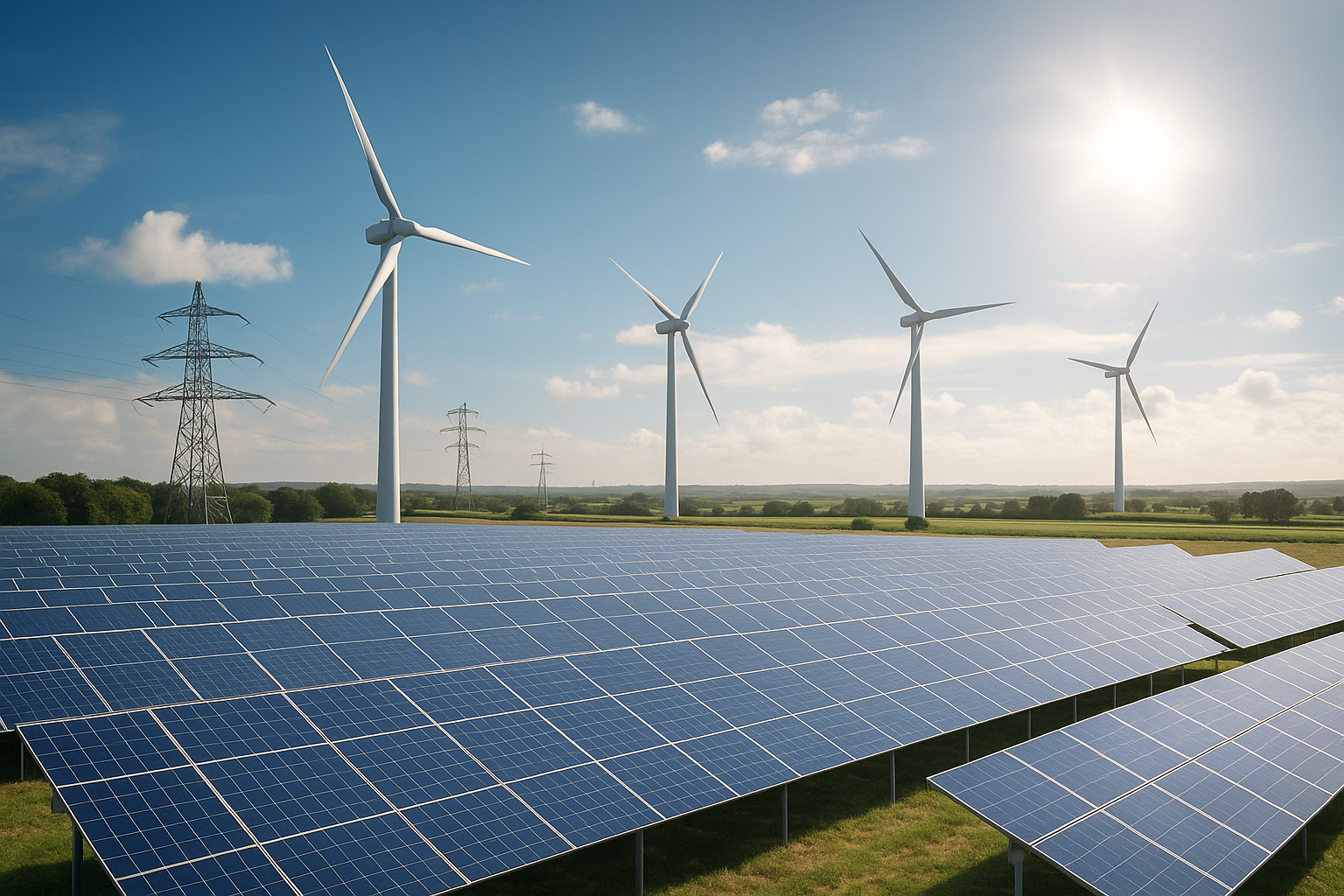How machine learning can slash grid losses and boost renewables
In smart grid management, ML enables dynamic control of distributed energy sources, managing real-time energy flows and detecting faults before they impact system stability. Reinforcement learning models, for instance, learn optimal dispatch strategies that adapt to fluctuating supply and demand. ML also facilitates predictive maintenance, extending the lifespan of energy assets by minimizing downtime and operational inefficiencies.

A new review published in Energies (2025, Vol. 18, Article 3315), titled "Leveraging Machine Learning in Next-Generation Climate Change Adaptation Efforts by Increasing Renewable Energy Integration and Efficiency", presents compelling evidence that machine learning (ML) is not merely an add-on to existing energy infrastructure but a foundational tool for ensuring resilient, efficient, and scalable climate adaptation strategies.
Conducted by researchers from Kazimierz Wielki University in Poland, the study details how ML algorithms can transform the operational, scientific, economic, and social dimensions of renewable energy systems. With the increasing urgency of climate threats and the volatility of energy markets, this review underscores ML’s potential to serve as the backbone of climate-resilient energy futures.
How can machine learning improve the performance of renewable energy systems?
The review outlines that ML technologies are already optimizing key domains, energy forecasting, smart grid control, and resource distribution, making renewable energy more reliable, adaptable, and efficient. ML-based forecasting models significantly improve accuracy by analyzing historical weather and consumption data, allowing utilities to predict demand and renewable output across short and long-term horizons. This helps reduce curtailment and dependence on fossil fuel backup systems.
In smart grid management, ML enables dynamic control of distributed energy sources, managing real-time energy flows and detecting faults before they impact system stability. Reinforcement learning models, for instance, learn optimal dispatch strategies that adapt to fluctuating supply and demand. ML also facilitates predictive maintenance, extending the lifespan of energy assets by minimizing downtime and operational inefficiencies.
Further, in resource allocation, ML tools optimize the storage and dispatch of renewable energy, ensuring equitable distribution and strategic deployment, particularly in climate-vulnerable or underserved regions. Algorithms assess usage patterns and environmental conditions to ensure that energy reaches critical infrastructure like hospitals and emergency services during climate-induced events.
This adaptability, according to the review, is especially critical as climate impacts become increasingly localized and extreme. ML systems are able to operate with regional granularity, adjusting to rapid shifts like sudden cloud cover or spikes in temperature. This ensures not only supply stability but also greater system resilience under environmental stressors.
What are the key barriers to ML-enabled climate adaptation?
Despite its transformative promise, the study warns of significant bottlenecks that must be addressed to fully realize ML’s benefits in climate-resilient energy systems.
At the scientific level, many ML models are not generalizable across geographies and energy infrastructures due to limited data availability. High-quality, real-time datasets remain sparse, fragmented, and often proprietary. Additionally, model transparency remains a critical concern, especially in deep learning models, which function as “black boxes” with decisions difficult to interpret or audit. This undermines public trust and raises concerns in regulatory and high-stakes operational environments.
Economically, upfront costs for digital infrastructure (e.g., sensors, edge devices) and workforce training limit adoption in low-income regions and smaller utilities. The review highlights that return on investment is not always clear, disincentivizing private-sector engagement. Regulatory frameworks also lag behind technological progress, with current energy markets and environmental policies not yet calibrated to support ML-driven innovations.
Socially, there are additional challenges. ML’s reliance on consumption data raises privacy concerns. There is also the risk of algorithmic bias, where underserved communities might be excluded from energy planning or receive suboptimal service. Low digital literacy, particularly in rural areas, further reduces workforce participation in ML-enabled systems. The fear of automation-driven job loss in traditional energy sectors may also breed resistance unless inclusive policies are implemented.
These limitations point to the need for holistic, interdisciplinary strategies that combine technological innovation with ethical governance, robust regulation, and targeted social engagement.
What strategic role can ML play in building climate-resilient, low-carbon societies?
The review calls ML as a core enabler of what it calls “next-generation climate adaptation”, a suite of strategies that go beyond traditional emissions reduction and infrastructure reinforcement. In this framework, ML is integral to building adaptive systems that are responsive, decentralized, and capable of real-time decision-making.
ML contributes to sustainability by minimizing energy waste, improving load balancing, and reducing emissions. In industrial applications, ML can detect inefficiencies in production systems, control heating and lighting in buildings based on occupancy and weather, and guide adaptive pricing models that promote off-peak energy use. These tools help decarbonize sectors while enhancing operational reliability.
The societal impacts are equally significant. ML can ensure energy equity by targeting interventions to vulnerable populations, improving access through decentralized systems like microgrids, and prioritizing critical services during disruptions. It also supports environmental justice through transparent, data-driven policy decisions that reflect the needs of diverse communities.
From a scientific standpoint, ML enhances localized climate forecasting, supports simulations of energy system resilience under various scenarios, and contributes to the development of new energy storage and efficiency technologies. It also catalyzes interdisciplinary research between AI experts, climate scientists, and policy designers, helping to translate innovation into regulation and practice.
Economically, the integration of ML into renewable energy systems is projected to reduce operational costs, create high-tech jobs, and improve national energy security. Examples like DeepMind’s wind forecasting for Google or the National Grid of China’s ML-based dispatch platform demonstrate how operational efficiency and predictability translate into economic value and market stability.
To harness these benefits, the review calls for more explainable AI models, hybrid approaches combining physical simulations with ML, and scalable architectures such as edge computing for real-time control. It advocates for open data platforms, interdisciplinary governance frameworks, and incentives for innovation, especially in underserved regions.
- FIRST PUBLISHED IN:
- Devdiscourse










